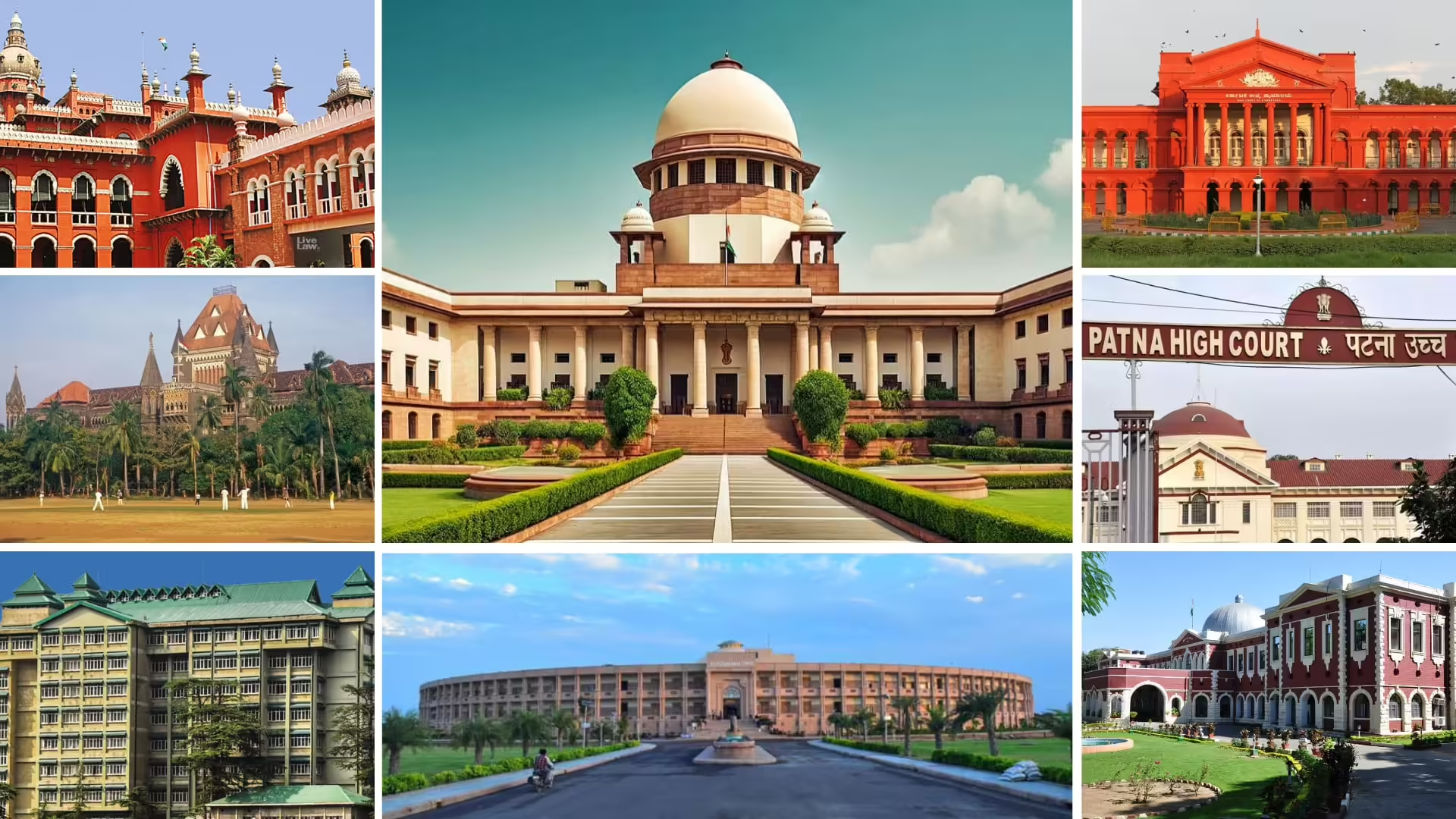Book Appointment Now

A Comprehensive Guide to India’s Court System and Judicial Hierarchy
Learn about the Judicial hierarchy of courts in India, from the Supreme Court to subordinate courts, and understand how the Indian judicial system functions to ensure justice. Discover the roles, responsibilities, and challenges of various courts within this structured legal framework.
The judicial Hierarchy system in India is structured in a hierarchical manner, designed to administer justice efficiently and ensure the rule of law. This hierarchy ranges from the Supreme Court at the top to various lower courts at the bottom, each serving specific roles and responsibilities.
Judicial Hierarchy
1. The Supreme Court of India
At the apex of the Indian judiciary is the Supreme Court, established in 1950. It is the highest court in the country, located in New Delhi. The Supreme Court primarily serves three roles:
- Constitutional Court: It interprets the Constitution of India and ensures that laws and actions of the government comply with constitutional provisions.
- Appellate Court: It hears appeals against decisions of High Courts and other courts and tribunals.
- Advisory Court: The President of India can seek its advice on important legal matters.
The Supreme Court consists of the Chief Justice of India and up to 33 other judges. Its decisions are binding on all other courts in the country.
2. High Courts
Beneath the Supreme Court are the High Courts, which are the highest courts at the state or union territory level. There are 25 High Courts in India, each having jurisdiction over a state, a union territory, or a group of states and union territories. High Courts primarily perform the following functions:
- Original Jurisdiction: Hearing cases directly, particularly those involving the violation of fundamental rights.
- Appellate Jurisdiction: Hearing appeals from lower courts within their jurisdiction.
- Supervisory Jurisdiction: Overseeing and guiding the operations of subordinate courts.
High Courts are vital for ensuring justice at the state level and serve as intermediaries between the Supreme Court and lower courts.
ALSO READ: Understanding Section 354A of the Indian Penal Code: A Comprehensive Guide to Combat Sexual Harassment
3. Subordinate Courts
Subordinate courts are the backbone of the judicial system and judicial hierarchy, dealing with the majority of cases. They are categorized into Civil Courts and Criminal Courts.
Civil Courts
- District Courts: At the district level, these courts handle civil cases. They are presided over by District Judges. In some cases, Additional District Judges and Assistant District Judges may also serve in these courts.
- Subordinate Courts: These include Senior Civil Judges and Junior Civil Judges who deal with civil disputes within their jurisdiction.
Criminal Courts
- Sessions Courts: These are the principal criminal courts in each district, led by a Sessions Judge. They handle serious criminal cases such as murder, rape, and robbery.
- Magistrate Courts: These include Chief Judicial Magistrates and Judicial Magistrates who handle less severe criminal cases. They are further divided into Metropolitan Magistrates in metropolitan areas.
4. Specialized Courts and Tribunals
India also has specialized courts and tribunals to deal with specific types of cases, ensuring expertise and efficiency. Some examples include:
- Family Courts: Handle cases related to marriage, divorce, child custody, etc.
- Consumer Courts: Address grievances of consumers.
- Labor Courts: Deal with disputes between employers and employees.
- Revenue Courts: Handle matters related to land revenue.
The Role of Judges
Judges play a crucial role in the Indian judicial hierarchy system. They interpret laws, assess evidence, and deliver judgments impartially. The selection and appointment of judges are based on their legal acumen and integrity, ensuring that justice is administered fairly.
ALSO READ: Understanding India’s Proposed Criminal Law Reforms: A Comprehensive Overview
Access to Justice
To ensure that justice is accessible to all, India has implemented various measures:
- Legal Aid Services: Providing free legal services to those who cannot afford them.
- Lok Adalats: These are informal courts aimed at settling disputes through conciliation and compromise, often providing quicker resolutions than traditional courts.
- Fast Track Courts: Established to expedite cases that have been pending for a long time, especially those involving women, children, and senior citizens.
Challenges and Reforms
Despite its comprehensive structure, the Indian judicial system faces challenges such as delays in case resolutions and a backlog of cases. Reforms are ongoing to improve efficiency, such as digitization of court records, increasing the number of judges, and enhancing infrastructure.
In summary, the hierarchy of courts in India is designed to ensure justice is delivered at all levels, from the grassroots to the highest echelons. While challenges remain, continuous efforts are being made to strengthen the system, making it more responsive and accessible to the needs of the people.



